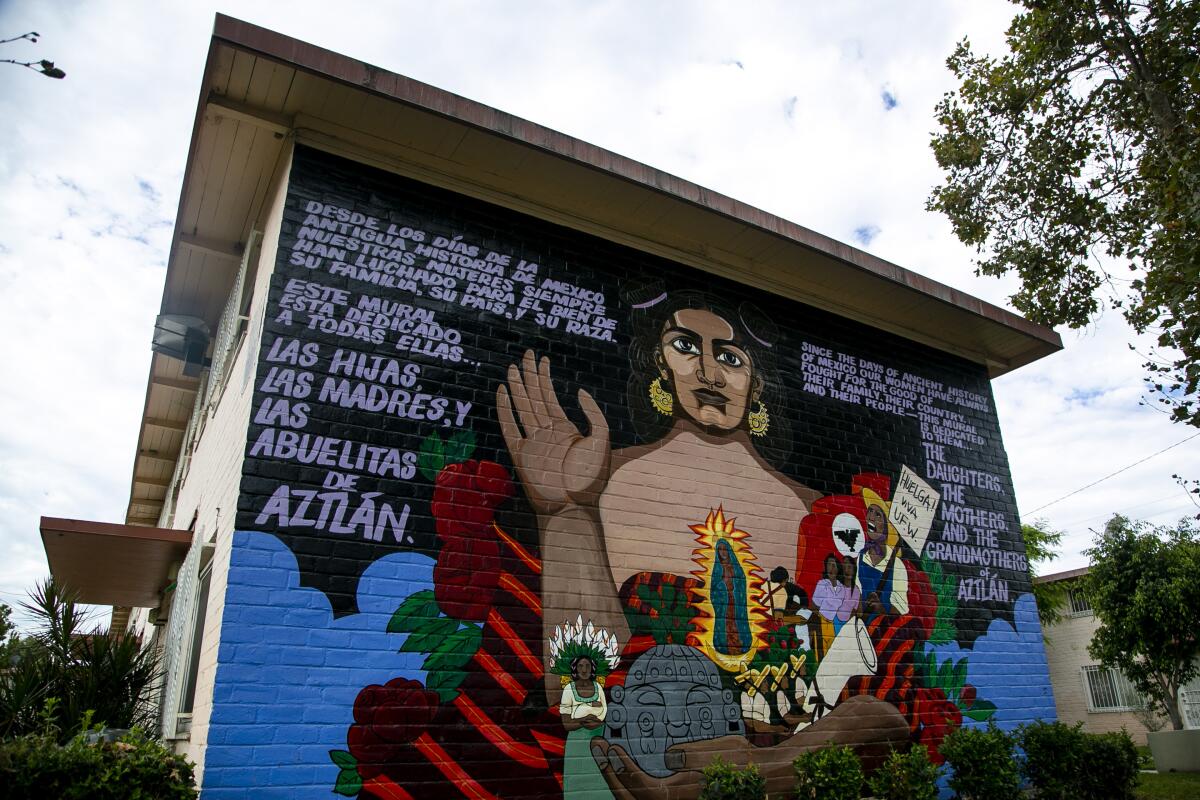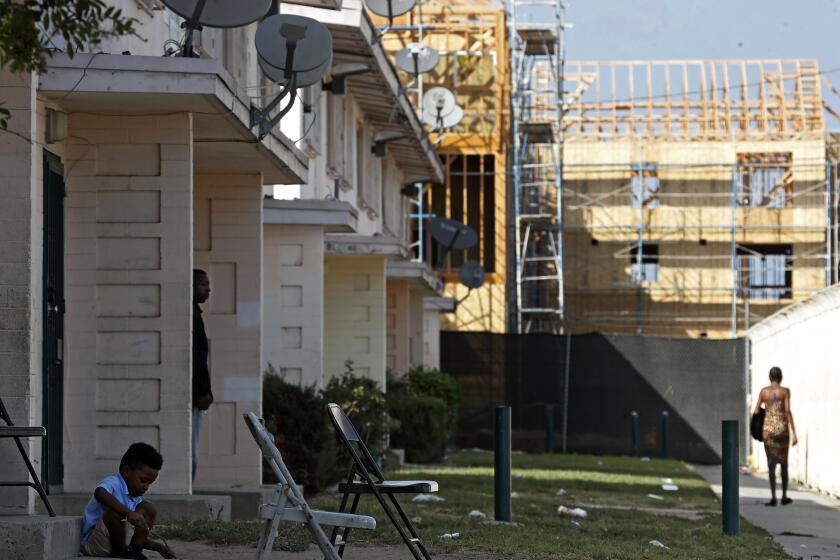Why California lawmakers are giving up a bid to repeal a nearly 75-year-old anti-public-housing measure

- Share via
A nearly 75-year-old anti-public-housing rule will remain in California’s Constitution as lawmakers are planning to withdraw a measure from the November ballot that would have repealed it.
State Sen. Ben Allen (D-Santa Monica), who wrote the repeal measure, said that the November ballot was too crowded with expensive tax, housing, bond and public safety campaigns to give his effort the best chance at succeeding.
“We always knew that under the right circumstances and with a quieter election, we could do a lot of voter education and make the case for repeal,” Allen said. “But it just doesn’t feel like the right time.”
Allen is asking his colleagues to formally remove the repeal measure from the ballot prior to a June 27 deadline.
In 1950, Californians voted to put a provision in the state Constitution that makes it harder for poor people to find a place to live.
The decision ends hopes for Allen and others in favor of more low-income housing to eliminate what they’ve called “a stain” on the state Constitution. The provision, titled Article 34, was approved via initiative in 1950 amid the height of McCarthyism and widespread racial discrimination in the housing market.
Article 34 requires the approval of local voters before public housing can be built. For decades after its passage, Article 34 stymied the construction of low-income housing in California and continues to add to its cost and uncertainty. No other state has a similar provision in its constitution.
The real estate industry in California sponsored Article 34, saying that taxpayers should have a right to vote on public housing projects because they were publicly funded infrastructure similar to schools or roads. The campaign appealed to racist fears of integration and painted public housing as a threat to capitalism.
The California Real Estate Assn., the forerunner of today’s California Assn. of Realtors, bought newspaper ads blaming “minority pressure groups” for pushing public housing, and the organization’s code of ethics at the time barred agents from integrating neighborhoods based on “race or nationality.” Its legislative committee chairman called public housing a form of “socialism that is gnawing at the vitals of America from within.”
Article 34’s passage helped set the stage for one of the defining events in modern Los Angeles history: voters’ 1952 rejection of a 3,400-unit public housing development planned for Mexican American neighborhoods known as Chavez Ravine. At the time of the vote, most of the thousands of people who had been living in Chavez Ravine communities already had been evicted. The city eventually gave the land to the Dodgers for a stadium to lure the baseball team from Brooklyn.
In the decades after Article 34 took effect, California developed a shortage of low-income housing, with federal officials in the late 1960s citing the constitutional provision as a cause.
The most direct effects of Article 34 have lessened over time. Low-income housing developments now are primarily funded through federal and state tax-credit programs, which do not automatically trigger public votes. Additionally, courts have ruled that cities can meet the requirements under Article 34 by having elections to allow an overall number of public housing units to be built in future years rather than holding a vote for every project.
But it remains costly and time-consuming for affordable-housing developers to structure deals to avoid a vote under Article 34, and local governments still have to put proposals on the ballot. In 2022, L.A. voters approved Measure LH, a move required by Article 34, to authorize up to 75,000 units of low-income housing citywide.
Legal challenges under Article 34 continue. The city of Millbrae in San Mateo County filed a lawsuit in 2023 contending that the county’s planned purchase of a hotel intended to be converted into homeless housing needs to go before voters. Last month, a San Mateo County Superior Court judge tentatively threw out Millbrae’s lawsuit on procedural grounds, but did not determine whether the hotel conversion plan complies with the Constitution.
On three prior occasions, state lawmakers have asked voters to repeal or weaken Article 34. All three, the last of which occurred in 1993, failed by large margins.
Analysts have said that attempts to remove Article 34 face a high burden of convincing the public to abandon the local decision-making required by the provision and overcome general sentiments against public housing.
In 2022, state lawmakers agreed to put a repeal measure on the 2024 ballot, which Allen said would allow sufficient time to build a coalition to fund the campaign.
Voters will choose whether to remove an anti-public housing provision in the state Constitution in 2024
Allen said that the repeal continued to have broad support, including from Republicans in the Legislature and otherwise warring factions in the state’s housing debates, but competing issues took precedence.
“Everybody wants to get it repealed, but it’s tough to make it so that it’s anyone’s No. 1 priority,” Allen said.
Two groups who had committed to financing the repeal efforts are fighting over another November ballot measure. The L.A.-based AIDS Healthcare Foundation is sponsoring what’s expected to be an expensive initiative campaign that would expand rent control across California, and one of the major opponents is the California Assn. of Realtors.
The Realtor group, which has apologized for its role in enshrining Article 34 in the Constitution, privately polled voters for their views on its repeal and found majority support for doing so, said Sanjay Wagle, the organization’s senior vice president of government affairs.
“However, research shows a voter education campaign is necessary to explain what Article 34 is and why it’s harmful,” Wagle said in a statement. “The cost of such a campaign in an election year with so many initiatives on the ballot will make this campaign more costly and difficult, thus making it more [logical] to pursue a repeal on a future ballot.”
AIDS Healthcare Foundation contributed $50,000 in March to a ballot measure committee controlled by Allen, which he said was intended to provide the initial funding for the Article 34 repeal campaign. Allen said that most of the donation now will be refunded.
Allen said he plans to continue pushing for the repeal of Article 34 at an upcoming election.
“We know we can get this thing passed,” he said. “We just want to make sure that we do.”
More to Read
Sign up for Essential California
The most important California stories and recommendations in your inbox every morning.
You may occasionally receive promotional content from the Los Angeles Times.








